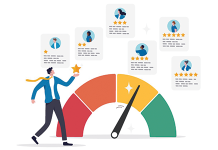Attending the Gartner CSO & Sales Leader Conference as an exhibitor and having a user roundtable workshop session made one thing abundantly clear: AI isn’t just coming, it’s already here, and it’s moving fast. There is a lot of buzz, a lot of excitement and definitely some pressure to embrace the latest tools and innovations.
But as I listened closely and dug deeper into conversations with leaders — going beyond which AI tool looked the flashiest among the booths — I kept returning to one critical question with people: “Is your data ready for AI?”
Again and again, the answer was some version of not really, or simply, no.
Whether I was talking with people at our booth, sitting in breakout sessions, or during our workshop on Optimizing Your RevOps Tech Stack for Growth, AI dominated the conversation. Sales leaders are curious; vendors are making big promises; and teams are already experimenting with tools like Copilot, ChatGPT, People.ai and a growing stack of others. But in nearly every conversation with sales and RevOps leaders, one clear pattern emerged:
Everyone wants to use AI and is feeling immense pressure to implement some kind of AI tool stack, but very few are confident that their data, systems or processes are ready for it.
AI Built on Bad Data Still Delivers Bad Results
It’s tempting to jump straight into AI. The possibilities feel endless. But what stood out more than anything else was how important it is to get the fundamentals right first.
One of the biggest takeaways people need to remember is that AI doesn’t fix data problems, it amplifies them.
- If your forecasts are off now, AI will just make them wrong faster.
- If your systems aren’t integrated, AI can’t connect the dots.
- If your CRM and planning tools aren’t aligned, AI won’t know which version of the truth to believe.
Without clean, connected real-time data — and the processes to support it — AI becomes just another siloed tool spitting out half-truths, inconsistent insights or conflicting answers.
The Real Opportunity: Strengthening RevOps Architecture First
What we shared in our workshop — and what I see play out every day with clients — is this: you can’t layer AI on top of dysfunction and expect transformation.
The real foundation for using AI meaningfully in sales performance includes:
- A modern data architecture (think lakehouse, not Excel spreadsheets and batch uploads)
- Integrated systems that talk to each other in real time
- Clean, governed, harmonized data across teams
- Flexible planning tools that support what-if analysis and scenario modeling
- Clear, repeatable processes for forecasting, segmentation, and territory planning
Once this foundation is in place, AI can be incredibly powerful, not just for insights, but for decisions that actually drive value.
Get the Data Right, Then Add AI
Ten years ago, we saw a rush to adopt software tools in the name of data and business intelligence. The idea was: collect more and more data, get smarter and make better decisions. Now, many organizations are buried under a pile of disconnected tools that aren’t solving the right problems and massive amounts of data that isn’t being utilized to drive decisions. We are all at risk of repeating that same cycle with AI.
Companies are racing to adopt AI tools without the underlying structure needed to use them effectively. That leads to big bills, confusing insights and, ultimately, missed opportunities to improve forecasting, decision-making and team efficiency. History, as we know, has a way of repeating itself. This time, we have a choice. Those who choose not to repeat history will have a big advantage over those who end up drowning in siloed AI tool confusion a few years from now.
I’m genuinely excited about what AI can do. If it’s utilized correctly, it will allow organizations to operate in ways we haven’t even dreamt of yet. But I’ve also seen how quickly AI can cause more harm than good if the core data structure isn’t solid. If your leadership is asking about AI or you’re beginning to explore it, here’s my advice:
Start with your data. Build the right architecture. Align your systems. Then bring in AI where it actually makes sense — don’t just implement and add to check a box.
If you’re unsure whether your organization is ready for AI or what steps to take next, we offer a complimentary 90-minute discovery session to assess your RevOps strategy and data readiness. We’ll help you identify quick wins, potential risks and a roadmap that aligns with your goals. Sign up for more information about scheduling a session today!




